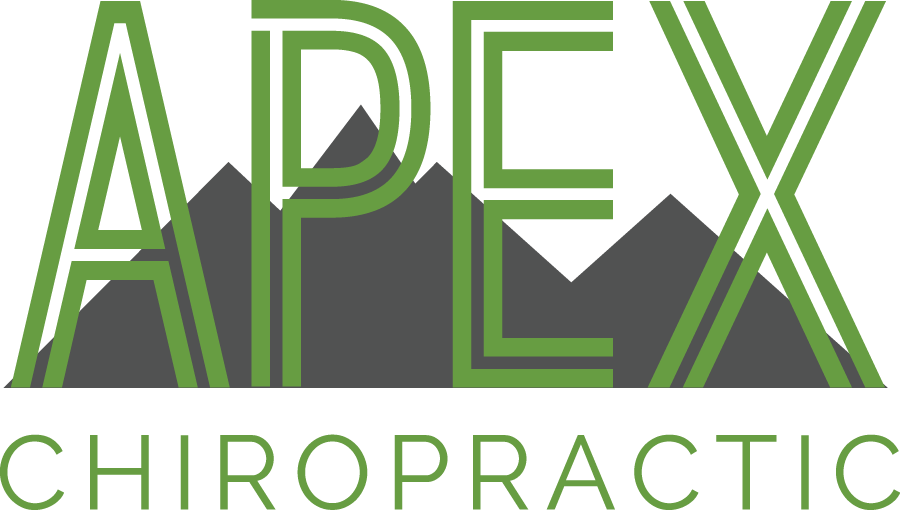There are so many types of chronic pain, and each has its own impact on your life and approach to treatment. If you’ve received a diagnosis of complex regional pain syndrome, or CRPS, you are at least one step closer to finding solutions that will relieve your pain and help you get back to a more normal daily life. Use this guide to learn more about this specific type of peripheral neuropathy, its types, causes and symptoms, and some treatment options available for you to explore.
What Is Complex Regional Pain Syndrome?
CRPS is a chronic condition with excessive and prolonged inflammation and pain following an injury to an arm or leg. Most people develop complex regional pain syndrome following an injury, surgery, stroke, or even a heart attack.
Most patients experience a constant level of pain with periods of more intense pain. Triggers of more intense pain include things as simple as a soft touch or a change in temperature. It is usually isolated to a single limb, either an arm or a leg.
Complex regional pain syndrome is a relatively uncommon condition, with only an estimated 200,000 people diagnosed each year in the United States. This relative infrequency leaves patients suffering from the condition without a lot of understanding and without new and innovative treatments that more common conditions receive.
Many patients feel like there’s a lack of support for dealing with CRPS because of the lack of data and research. That said, armed with an understanding of the condition, you’ll find ways to not only cope but also treat the pain effectively and experience some relief so that you can return to a more normal life.
Types and Causes
There are two types of complex regional pain syndrome. Type 1 is also known as reflex sympathetic dystrophy and occurs after an illness or injury that didn’t damage the nerves in the affected limb. Type 1 accounts for about 90% of all complex regional pain syndrome cases. Conversely, type 2 occurs after a distinct nerve injury.
The vast majority of cases result from “forceful trauma” to the affected limb. However, other injuries may also cause the syndrome, including something as simple as a sprained ankle.
Despite knowing the condition is linked to some type of trauma, there is little known about its full causal and risk profile. For instance, why do some people develop the condition after trauma, while others do not? While there are some theories among researchers, there is little conclusive evidence.
CRPS Symptoms
You may experience a variety of symptoms when you suffer from complex regional pain syndrome. Many of these symptoms tie back to poor circulation caused by the underlying syndrome. The restricted circulation starves cells of the necessary oxygen and nutrients to allow the cells to function properly.
One of the key symptoms is the painful sensation you’ll have in the affected limb. This is unprovoked or spontaneous and can either be constant or may fluctuate with activity. Most patients experience this as either burning, pins and needles, or a feeling of the limb being squeezed. In some cases, the body may experience mirror pain, which is symptoms from the primary site occurring in the opposite limb. You may also notice extra sensitivity to light touch and excessive or prolonged sensations from mild painful stimulation, such as a pinprick.
You may also experience:
- Changes to the skin, including temperature, swelling, and color.
- Skin may become shiny and thin or thick and scaly.
- Changes in sweating, hair, or nails on the affected limb.
- Stiffness in affected joints.
- Muscle weakness, tremors, or spasms.
- Decreased mobility in the affected limb.
Potential Complications
The aforementioned side effects are more than enough for patients to find solutions for coping. However, people who suffer from complex regional pain syndrome may also experience longer-term complications.
The first and most significant is tissue atrophy. You may have heard of muscle atrophy, which is the wasting away of muscle tissue due to lack of use. However, it’s not the only tissue in the body that can atrophy, so can skin and bone tissue. The cause of this atrophy is a lack of use or stimulation due to the pain associated with CRPS.
Aside from atrophy, your muscles may also experience contracture, which is more commonly known as tightening. The exact nature of the contracture is inconsistent among all CRPS patients, with some having a neurological component, known as dystonia. For CRPS patients with dystonia, stretching the affected areas can trigger a contraction, making it difficult to treat.
Traditional Treatment Options for Complex Regional Pain Syndrome
Traditional treatments are those offered by a medical doctor. Being CRPS can be challenging to properly diagnose, your PCP may recommend you see one or more specialists, including a neurologist, rheumatologist, or a pain specialist. From these specialists, you may receive a recommendation for medications to help manage pain and therapies to help maintain mobility.
Medications
Pain medications are likely the first step your provider will recommend, starting with over-the-counter, or OTC, options. Aspirin, ibuprofen, and naproxen are all OTC options that many people turn to when they’re experiencing pain. Some of these may help reduce inflammation, and most will provide some relief for mild pain. If these don’t work, your doctor may look at prescriptive pain management options, including low-dose opioid medications. Your provider may also recommend topical analgesics such as Lidoderm, ZTlido, or others.
After an evaluation, your provider may also recommend options for controlling inflammation. The most common recommendation is corticosteroids, which your doctor may prescribe for topical or oral use.
Other medications your provider may recommend include:
- Antidepressants
- Anticonvulsants
- Bone-loss medications
- Sympathetic nerve-blocking medications
- Intravenous ketamine
- Hypertension medications
Therapies
Physical or occupational therapy are the most commonly prescribed therapies for CRPS. The gentle exercises guided by your therapist can help reduce pain and increase your range of motion and strength.
Depending on the severity of your case, your provider may recommend spinal cord stimulation or an intrathecal drug pump. Spinal cord stimulation uses small electrodes along your spinal cord. A small electric current then stimulates your spine, providing some pain relief. An intrathecal drug pump delivers pain relief medications directly into the spinal fluid.
Your provider, PT, or OT may recommend mirror therapy. This therapy uses a mirror to trick your brain. You move your healthy limb but the mirror makes your brain perceive that it’s the limb affected by CRPS moving without any pain. This therapy uses the power of perception to help reduce your pain and increase your range of motion.
Similarly, your provider might recommend learning biofeedback. This is a therapeutic technique you can use wherever you are, whether you’re at a therapy visit or not. This technique relies on your awareness of your body and your ability to relax it to relieve pain.
Alternative and Complimentary Treatments
Beyond the traditional therapies your provider might recommend, there is a range of alternative and complementary therapies. A qualified chiropractor, like those at Apex Chiropractic, can provide many of these treatments or refer you to a recommended practitioner.
Spinal Manipulation
Spinal manipulation is the treatment option most people associate with chiropractic care. Whether your chiropractor administers this with a high-velocity low amplitude technique or uses a specialized tool like what’s used in the Torque Release Technique, the results are similar. The body releases beta-endorphins, which is a pain blocker your body naturally produces.
In addition to these providing immediate pain relief, spinal manipulation also corrects inhibited signaling pathways in your central and peripheral nervous system. Further, these structural shifts can also inhibit the delivery of oxygen and nutrients to the affected limbs.
Nutritional Therapy
The nutrients you give your body are exceptionally important, especially when you’re trying to heal from a particular injury. In fact, the Department of Veteran’s Affairs offers guidance on what supplements may help when treating chronic pain. When it comes to complex regional pain syndrome, some of the most commonly used are alpha lipoic acid and vitamin B12.
The essential thing to remember is that every body is a little different, and what will work for one person may not work for the next. Working with a highly trained professional who has studied what various nutrients do in the body and who can effectively test to see exactly what your body needs will help you avoid wasting your money on fad nutraceuticals but get exactly what your body needs.
Electromagnetic Infrared Therapy
Part of the damage that happens with any form of neuropathy is restricted blood flow to the nerves, which then further damages the nerves. To counteract that, the body requires a process called angiogenesis, which is where it develops new blood vessels. When new blood vessels grow around damaged peripheral nerves, those nerves get more of the nutrients needed to heal and repair.
Electromagnetic infrared therapy is a very effective treatment that stimulates this angiogenesis through vasoendothelial growth. This therapy uses low-level light therapy in the infrared range that has demonstrated the ability to help reduce pain in various musculoskeletal conditions. The mechanisms this works through are reducing inflammation, improving blood circulation, accelerating cellular repair, and detoxifying toxins that perpetuate chronic pain.
Nerve Re-Education Therapy
Some of the most common peripheral neuropathy comes from those who’ve had to undergo chemotherapy treatment. As a result, the Cancer Centers of America has conducted extensive research in ways to help reduce neuropathic pain and improve overall patient outcomes. One of the results of their research is the practice of nerve re-education therapy.
This particular therapy utilizes a special device that stimulates nerve growth through electrostimulation. To get the most benefit, patients receive a device to use at home to continue therapy between appointments with their chiropractor. Many patients report immediate pain relief and long-term restoration of normal sensation.
TENS Therapy
TENS therapy, or transcutaneous electrical nerve stimulation, is another form of electrostimulation that has grown in popularity over the last decade. According to some studies, TENS therapy for CRPS has shown significant improvement in pain related to the condition.
This particular technique uses small electrodes placed on the skin to send a small electric current through affected nerve endings, which blocks pain signals. While there are over-the-counter units available, it’s important to work with a professional to get the most from the therapy. First, the devices available from a licensed provider will give you the exact stimulation you need for your particular symptoms. Further, they will provide education on how to place your electrodes effectively and the method and frequency for using your device to get the most benefit from the therapy.
Dry Needling
Dry needling is similar to acupuncture in that they both use thin needles to provide some form of stimulation. Dry needling focuses on the strong stimulation of muscles to release trigger points. Some studies suggest that ultrasound-guided dry needling produces significant results in reducing the biological component of chronic pain associated with CRPS.
Heat Therapy
When it comes to using heat or ice therapy, it’s critical to know which is best for the pain you’re experiencing. Cold therapy can exacerbate CRPS symptoms, but the proper application of heat can help relax those symptoms.
Like many other complementary therapies, you need the right amount of heat for the proper duration to get the most benefit. A chiropractor trained in additional pain relief modalities can help identify the best method for heat application and guide you on its appropriate use. Part of what they’ll look at is not only the length of each use, but also how frequently you should use the heat, and the best area for application to get the most relief.
Complex regional pain syndrome doesn’t have to stop you from enjoying life. People around Louisville seek effective neuropathy treatment from the experts at Apex Chiropractic, including CRPS. Schedule your nerve screening and find ways to get lasting relief.

Ready to See the Best Chiropractor in Louisville, CO?
Apex Chiropractic believes in thriving through life, not suffering in it. We believe that the activities that we want to partake in do not only desire but are necessary, just as necessary as our daily activities. In order to thrive in life and not suffer, we have to be completely in tune with our bodies. Schedule your appointment with us, today.
Like this article? Spread the word!
Related Posts
June 29, 2023
The Potential Mechanism of COVID Vaccine-Induced Peripheral Neuropathy: Numbness and Tingling in the Hands and Feet
Discover the potential mechanism behind COVID vaccine-induced peripheral neuropathy and…
June 9, 2023
Diabetic Neuropathy: Understanding the Connection Between Diabetes and Nerve Damage and How Chiropractic Care Can Help
Explore the connection between diabetes and nerve damage in our informative blog on…
February 28, 2023
Guide to Brachial Plexus Neuropathy
Brachial plexus neuropathy affects the shoulder, arm, hand, and chest. Use this guide to…





